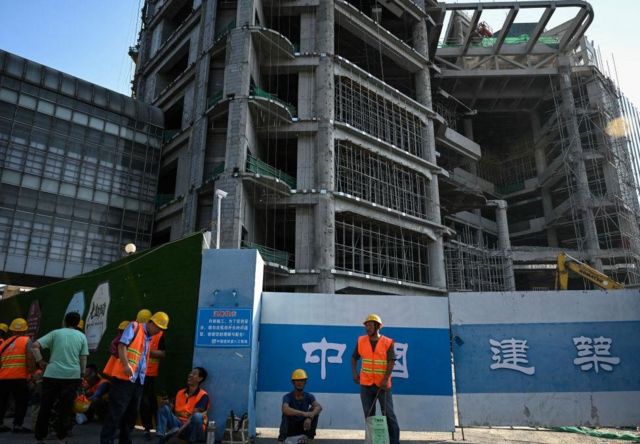The annual economic data released by the National Bureau of Statistics on Wednesday (January 17) showed that the annual GDP (GDP) increased by 5.2%year -on -year.
In the past year, the road of recovery of China's economy was three%off MDASH; mdash; the first quarter of GDP increased by 4.5 and 6.3%in the second quarter, 4.9%in the third quarter, and 5.2%in the fourth quarter.
However, this data is based on the year -on -year growth rate based on the non -normal state of 2022. The low base effect makes the data distorted. What is more reflected in the recovery is MDASH after the seasonal adjustment.The recovery was 2.1%; but in the second quarter, it was almost stagnant and only increased by 0.6%; the policy increased by the policy in the third quarter, and the growth rate rose to 1.5%; but the fourth quarter was slightly weakened, an increase of 1%.
Our evaluation of China's economic performance in 2023 is passing.Xu Tianchen, a senior economic analyst of Economist Think Tank (EIU), told Chinese that although the Chinese economy does surpass the official goal, if it can be more powerful to cope with the real estate collapse and increase investment in the private sector, the Chinese economy can haveGet higher scores.
Exit: open and low, increase slightly throughout the year

Image source, getty images
In early 2023, the clearance policy was just concluded. After the Spring Festival holiday, China's export data began to grow at a high speed at high speed. In RMB, exports increased by 23.4%year -on -year and exports increased by 16.8%year -on -year.
However, began in May, and suddenly turned around and fell, with an export increase of -0.8%; the decline in June further increased to -8.3%; in July, August, and September, it shrank -9.2%,-3.2%and -0.6%.Until October increased by 0.9%, the growth momentum continued in November and December, an increase of 1.7%and 3.8%.
After surging and plummeting, the annual exports were 237.726 billion yuan, only 0.6%of the slight increase, and contributed limited to economic growth.
From the perspective of demand, the three driving carriages that drive the Chinese economy are: export, consumption, and investment.
In the past 20 years, the proportion of China's exports has gone through a surge, and its growth rate has remained 1.5 times the growth rate of GDP; by 2006, the proportion of exports accounted for the peak of China's GDP, that is, 36%.Subsequently, it began to fall, and it became stable after falling to 19%in 2018. In 2023, exports accounted for 18.8%of GDP.
If the industry perspective, automobile manufacturing is emerging.
According to the latest data of the General Administration of Customs, in 2023, China Automobile exported 5.221 million units, an increase of 57.4%year -on -year.It is expected to become the world's largest car exporter.
What is even more significant is that new energy vehicles export more than 1.2 million units, an increase of more than 77%year -on -year.The top three countries in exports are Belgium, Thailand and Britain.
The average export price increased from $ 19,500 in 2021 to $ 23,800 in 2023.
Among the carriage, consumption plays a main engine in terms of driving growth.
The total retail sales of consumer goods throughout the year were 47149.5 billion yuan, an increase of 7.2%over the previous year.The contribution rate of consumer expenditure to economic growth reached 82.5%, in contrast, consumption contributed 39.4%to economic growth in 2022.
Simply put, more than 80%of the Chinese economy increased from 5.2%of the previous year in 2023, from the recovery of consumption.
In consumption, the increase in service consumption is particularly obvious, reaching 20.0%.This part includes restaurants, cinemas, etc., which are related to the shrinking of service consumption in the epidemic of last year.
Xu Tianchen believes that the development of a positive situation is that after China was reopened, the financial status of low -income groups improved.This injected vitality into consumption and conducive to common prosperity.
However, another data announced in the same period also shows risks. The consumer price (CPI) of residents throughout the year has fallen MDash for three consecutive months; MDash; in the economic field, it is generally believed that CPI maintains a mild growth of about 2%, which can promote the economy to be healthier and healthierThe development of the ground is also the extent that policy makers of various countries want to reach. The Federal Reserve raised interest rates in the past year in order to reduce the price level.
China is facing the opposite situation. Although consumption is recovered rapidly, it is also the most affected part of the epidemic period, and the problem of insufficient demand still plagues the Chinese economy.
Kang Yi, director of the National Bureau of Statistics of China, also said that this reflects problems such as insufficient effective demand to a certain extent.Insufficient effective demand is the staged phenomenon that the economy has gradually moved towards normal state after the impact of the three -year epidemic situation. Insufficient demand in the short term can lead to the decline in prices.
In other words, residents' confidence in consumption has recovered, but consumption potential still has huge excavation space.
Luo Zhiheng, chief economist of Yuekai Securities, explained this problem through another set of data MDASH; MDASH; 2023 residents' average consumption tendency (per capita consumption expenditure accounted for per capita disposable income) was 68.3%, which was 66.5%higher than 2022, and 66.5%in 2022, and 66.5%in 2022.However, it is still lower than 70.1%in 2019. At the same time, considering that the residents accumulated a lot of excess savings since 2022, if the policy can effectively stimulate consumption willingness, residents are expected to increase rapidly.
Investment: Real estate drags, continue to bottom out

Image source, getty images
Investment in the carriage, China's fixed asset investment (excluding farmers) throughout the year increased by 3%year -on -year, and fell 2.1 percentage points from 5.1%in 2022.
However, the number of structural differences behind this number mdash; MDASH; manufacturing and infrastructure investment significantly exceeded the overall growth rate of GDP, and real estate investment continued to shrink sharply, dragging down the entire economy.
The real estate investment that has declined in two years continued to bottom out. The real estate development investment was -9.6%year-on-year, which was almost the same as the growth rate of 2022 -10%.
Manufacturing investment is 6.5%year-on-year, slightly lower than the high growth rate of 9.1%in the previous year, but stronger than the level of 5%-5.5%in the previous years.
The government's most dominant infrastructure investment has increased significantly to 8.2%, becoming the most important support for investing in this carriage.
The data also shows the structural differences of the other two investment mdash; mdash;
● In terms of regions, investment in the eastern region increased by 4.4%over the previous year, investment in the central region increased by 0.3%, investment in the western region increased by 0.1%, and investment in Northeast region decreased by 1.8%.
● In terms of registered registration types, the investment in fixed assets of domestic -funded enterprises has increased by 3.2%over the previous year. The investment in fixed assets of Hong Kong, Macao and Taiwan business enterprises decreased by 2.7%, and fixed asset investment in foreign enterprises increased by 0.6%.
Xu Tianchen concluded that Chinese officials seemed to be managing lower growth in 2023.The growth rate of 5.2% in the fourth quarter was the same as the cumulative growth rate in the first to the third quarter, and the workIndustry production, retail sales, service consumption, and solid GDP asset investment have accelerated.One possible reason for officials to regulate the number is that they have decided to have a challenging target (should be 5%) in 2024, and the current actual situation is not so optimistic.Then the slowdown in growth will increase the possibility of achieving this goal in 2024.
EIU predicts that the Chinese government will set the economic growth target of 2024 to about 5%again.However, because the economy is facing many challenges, especially the continuous downturn of real estate, 5% of its goals are not easy to achieve.Therefore, the government will rely on financial expansion and public investment to achieve this goal.EIU's prediction of economic growth in 2024 is 4.9%, which reflects that public investment may play a huge role in this year, but relying on public investment may postpone China's economic structure adjustment again.
A key question that needs to be concerned in 2024 is whether officials can eliminate confidence deficits between consumers, private entrepreneurs and foreign investors.Of course, China ’s efforts to open up to the world are of course welcomed, but to re -win trust, it is necessary to strengthen the coordination and consistency between policies.


